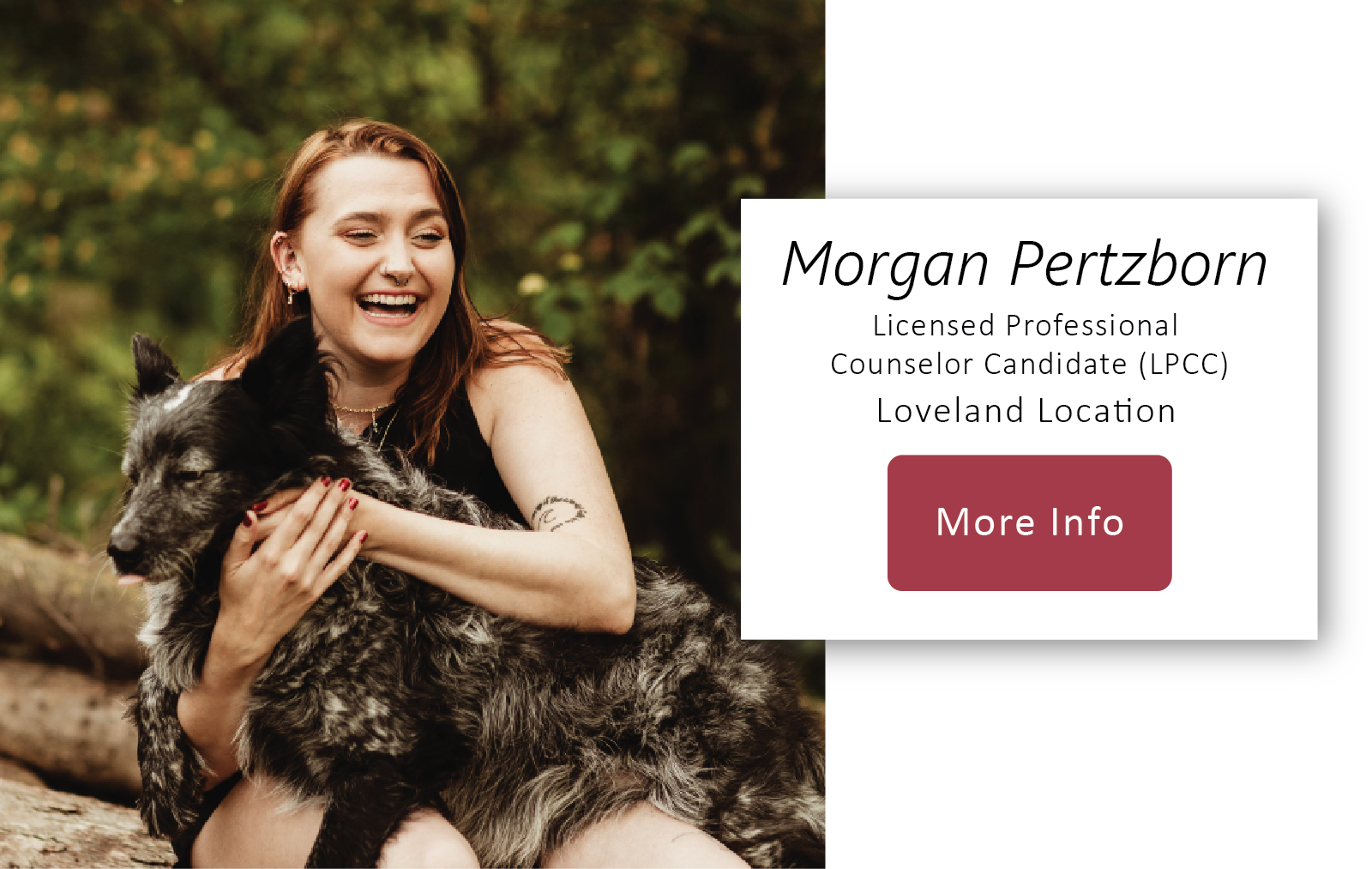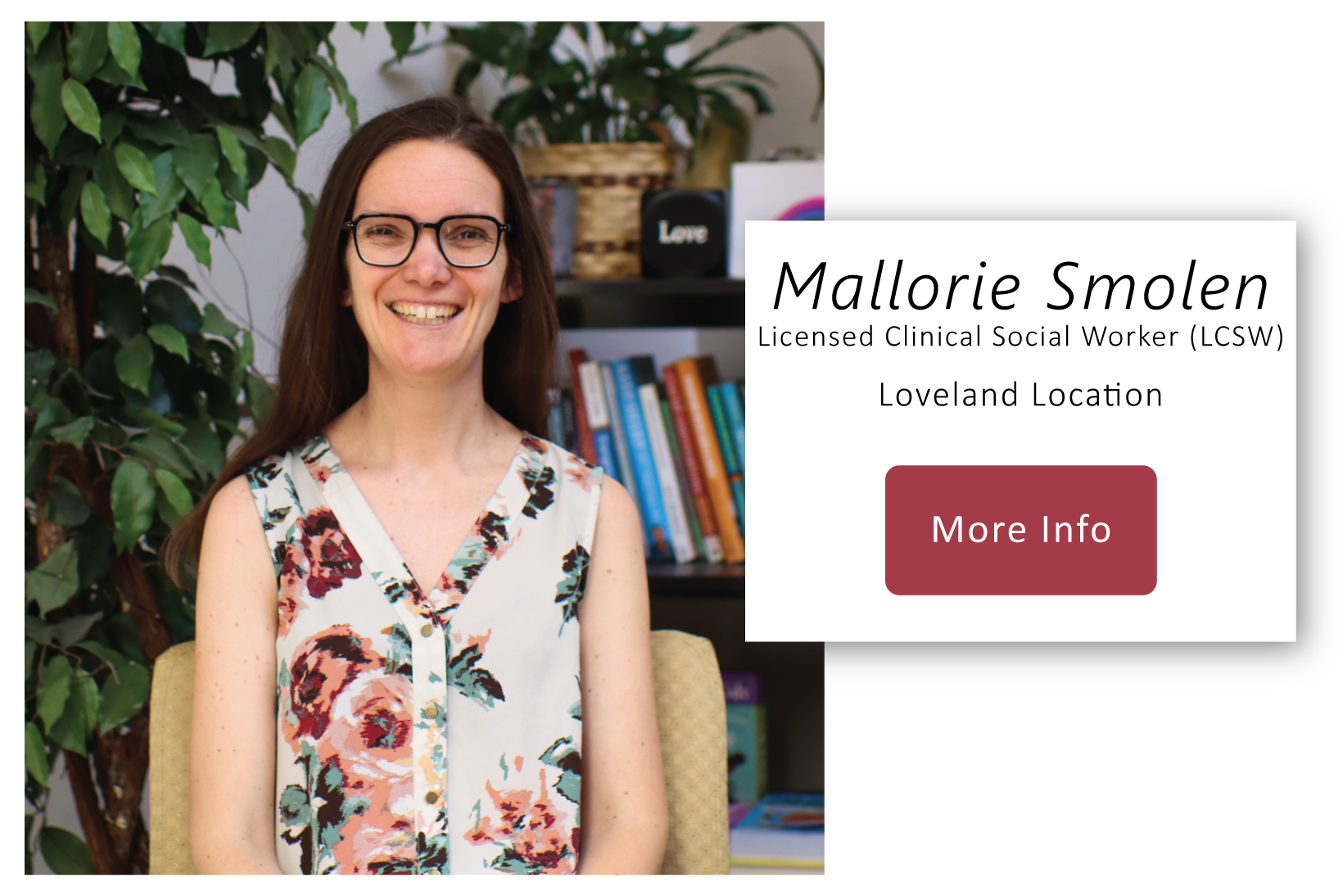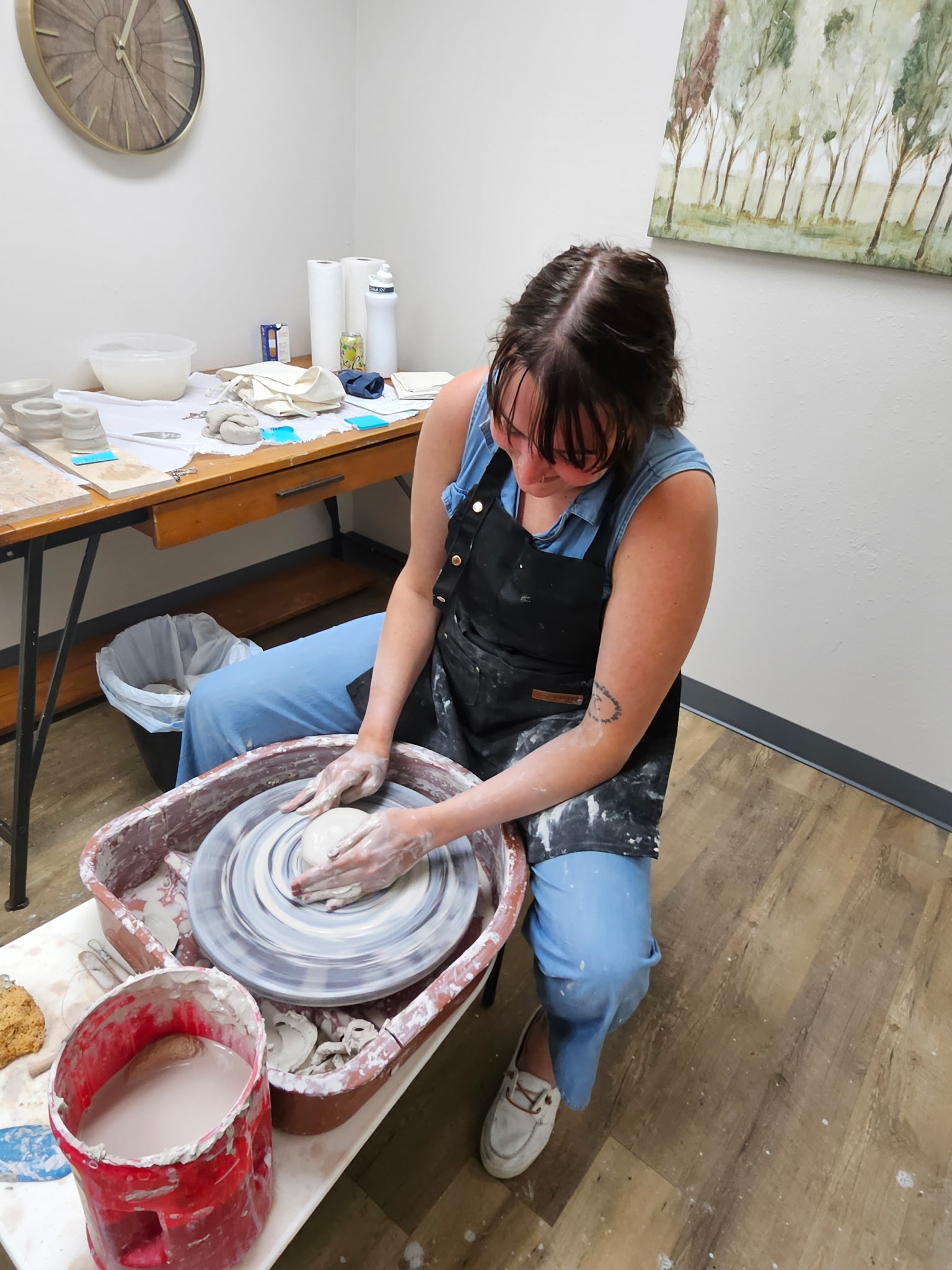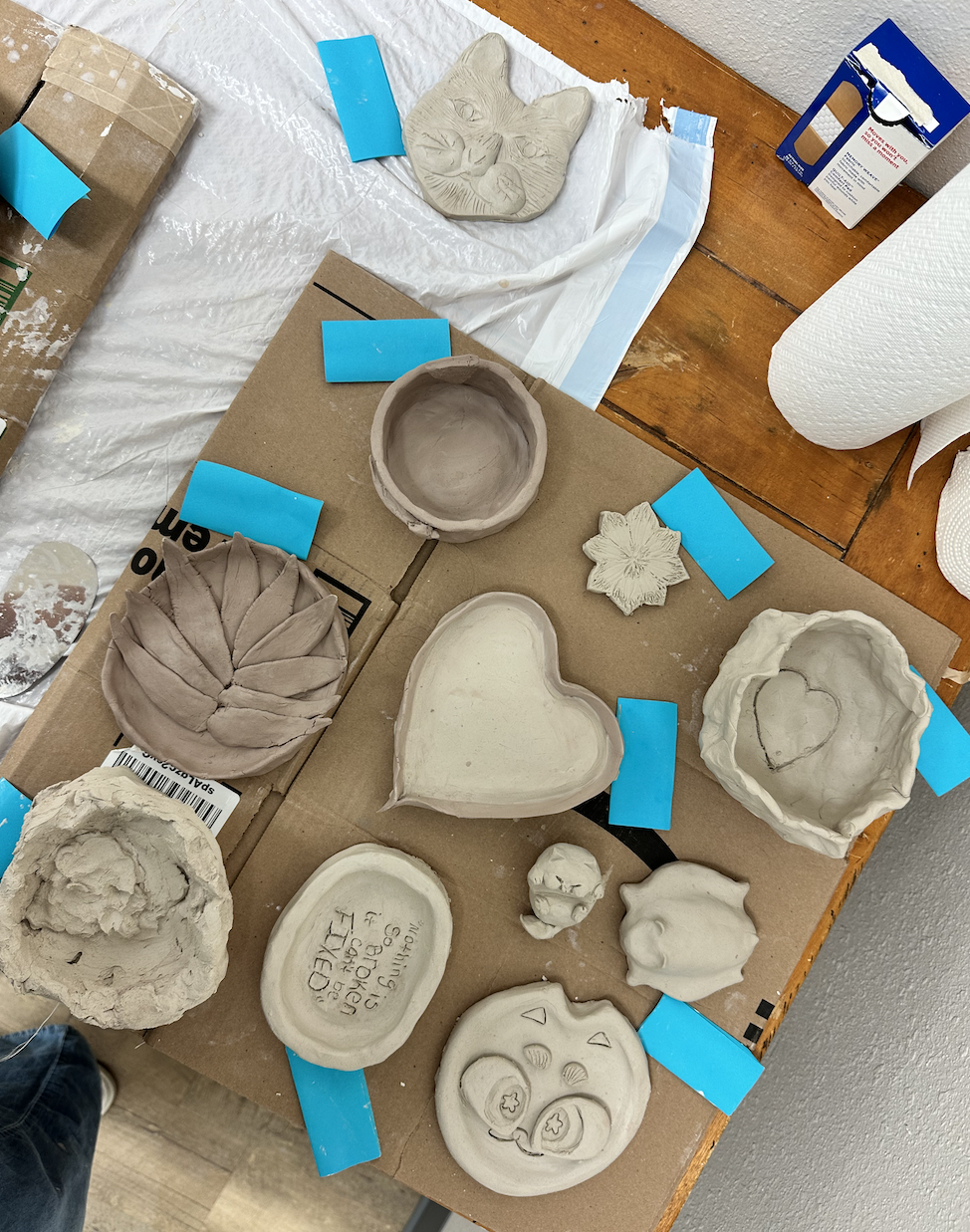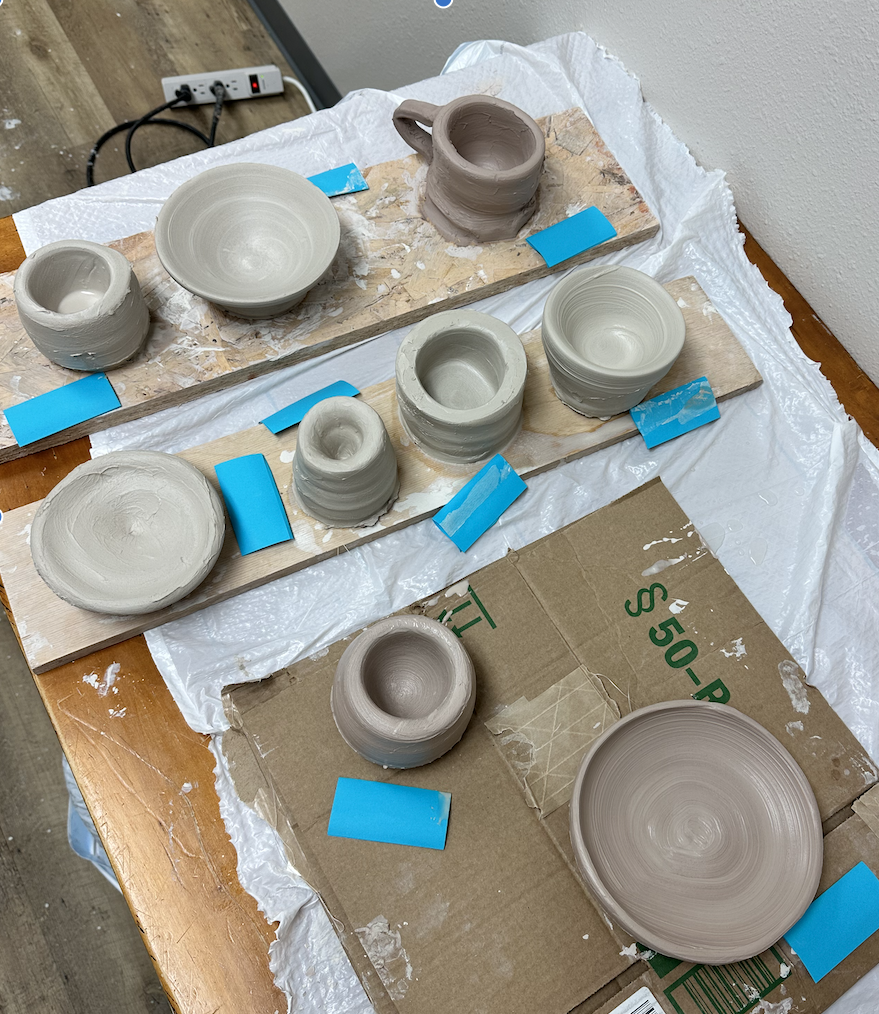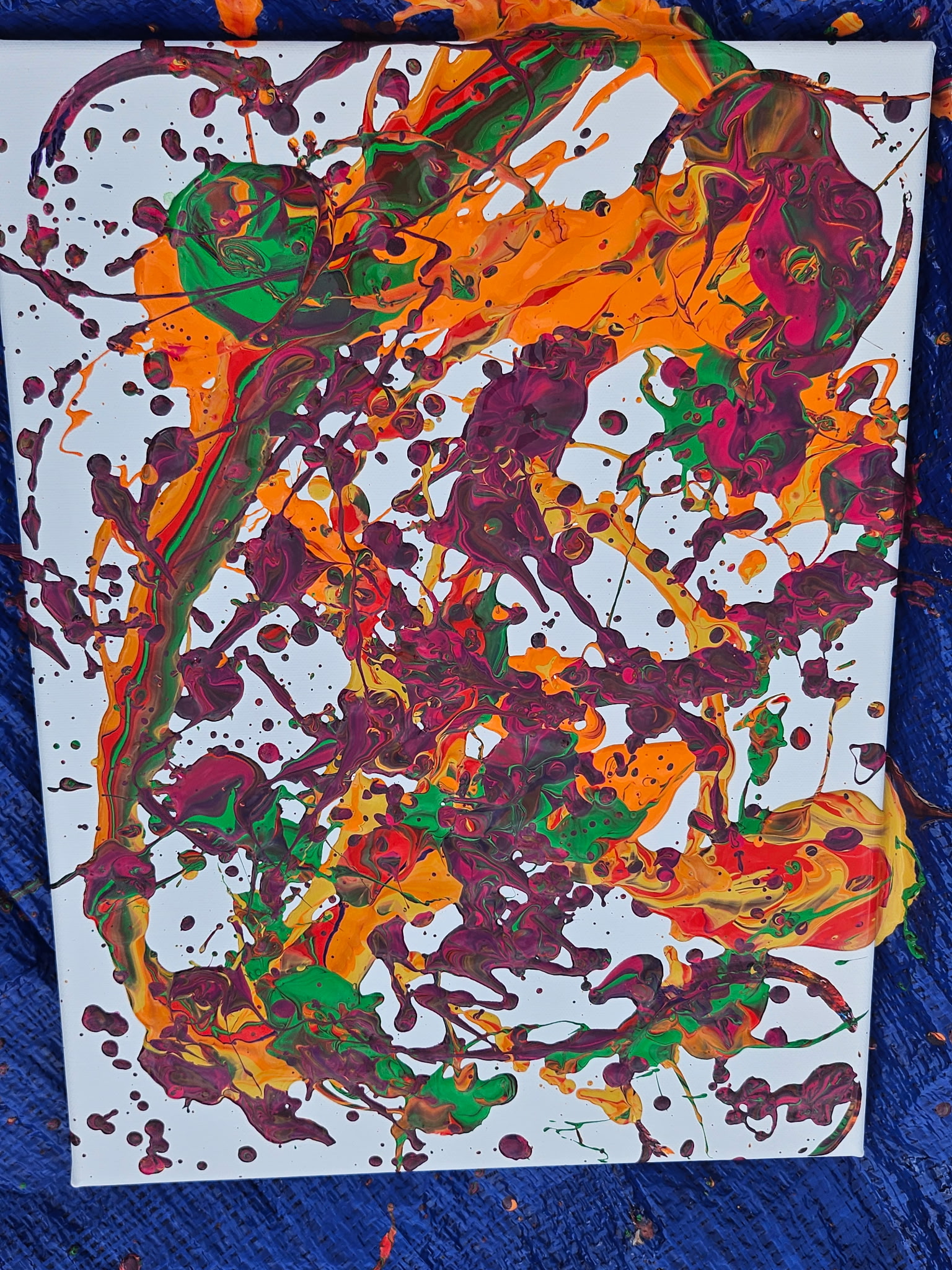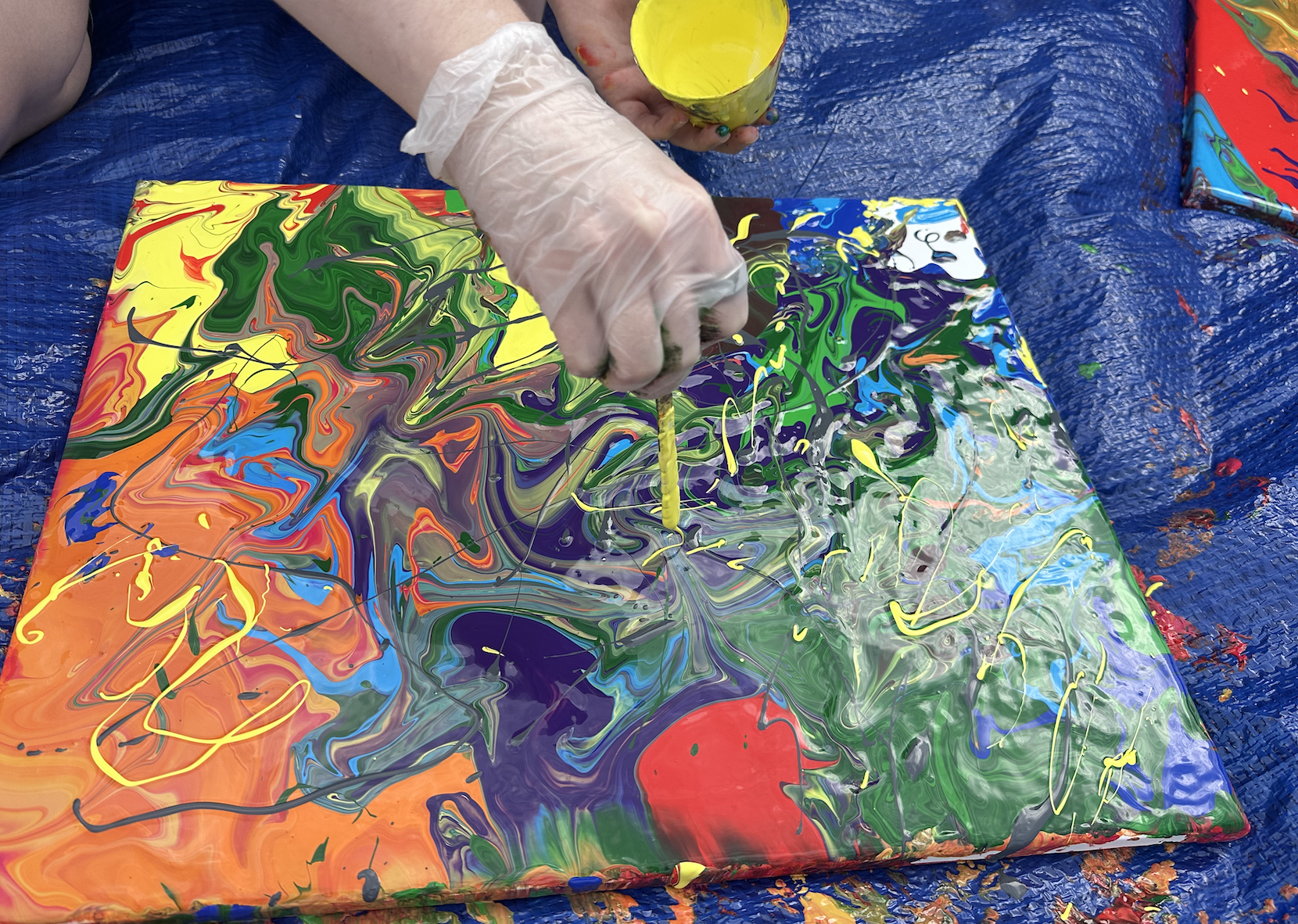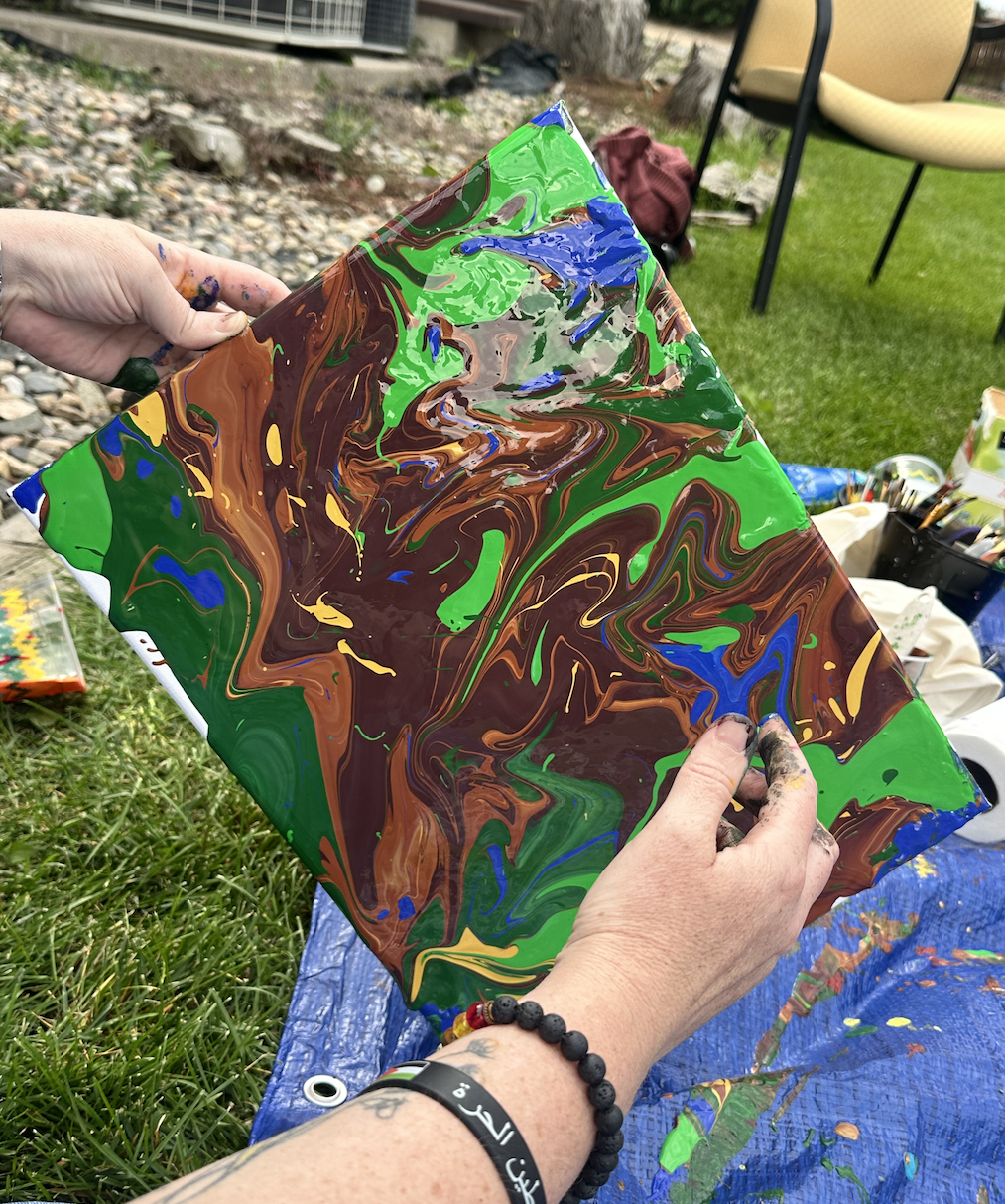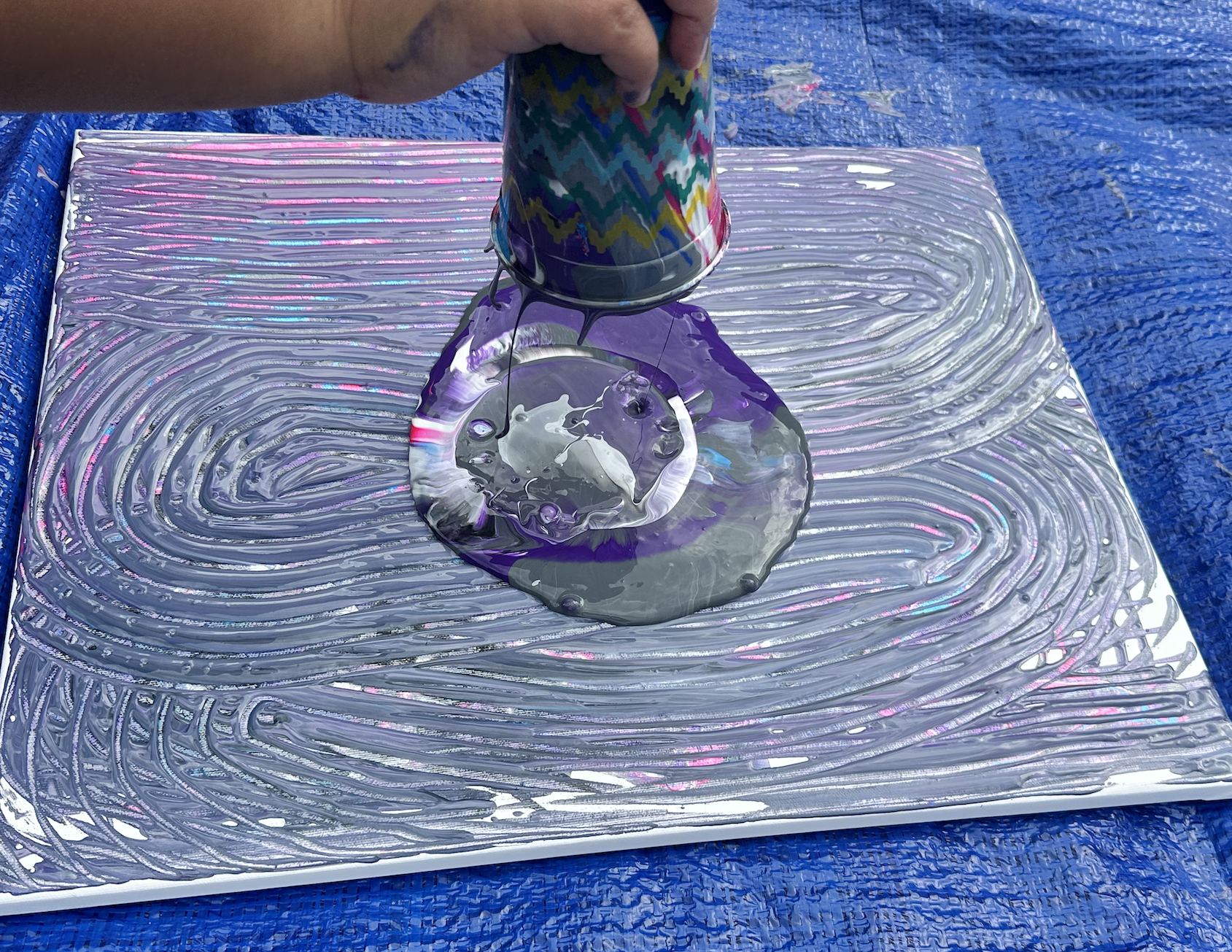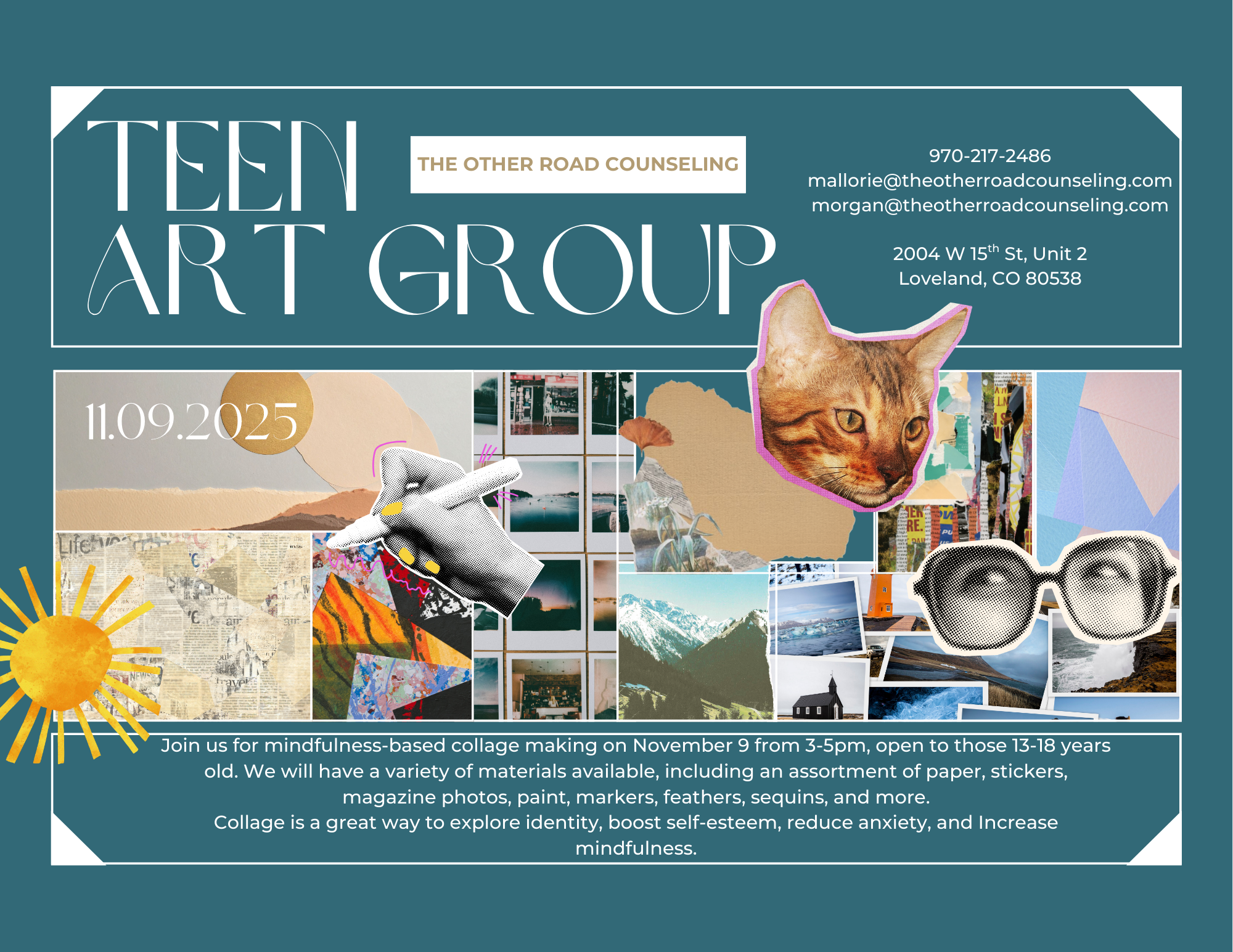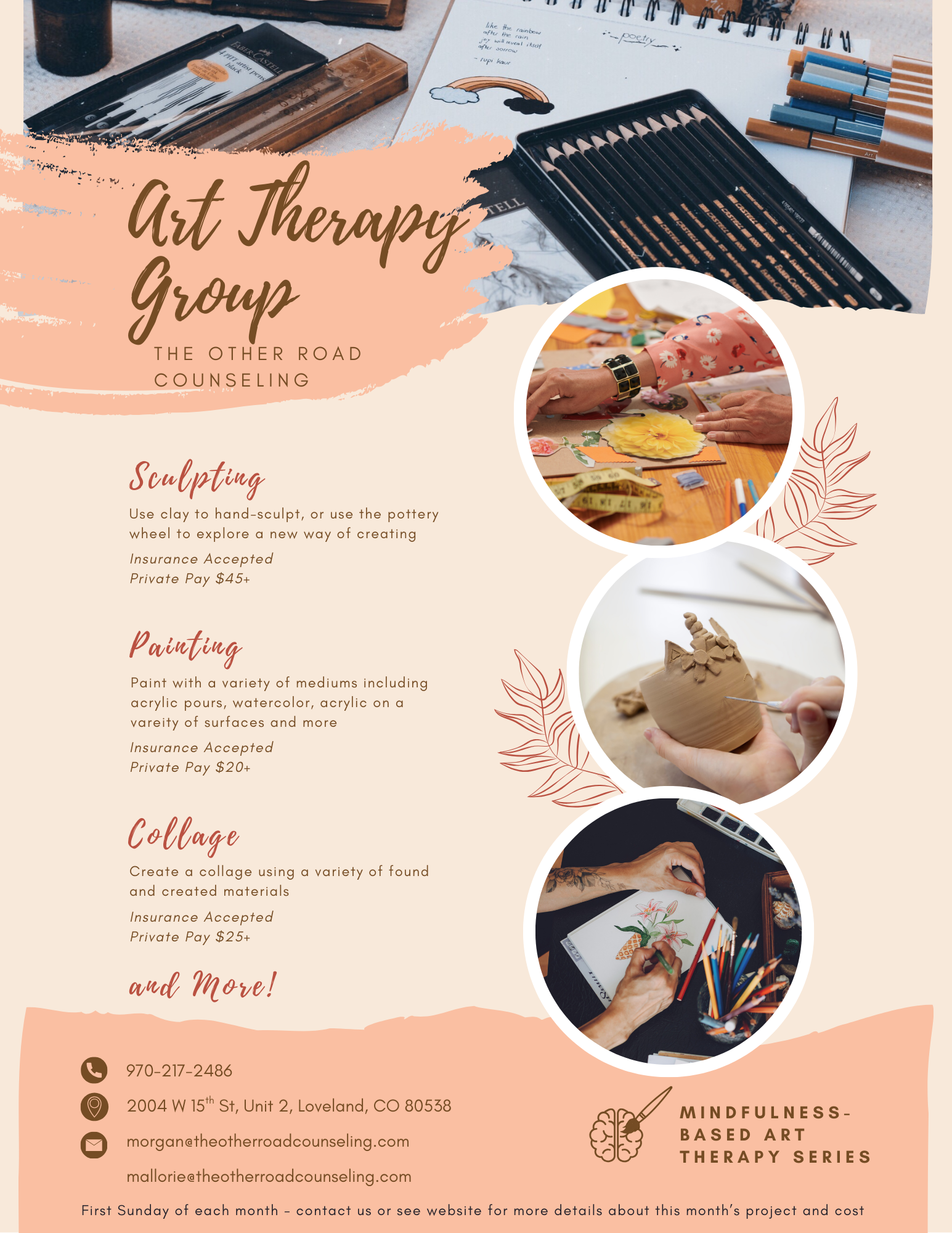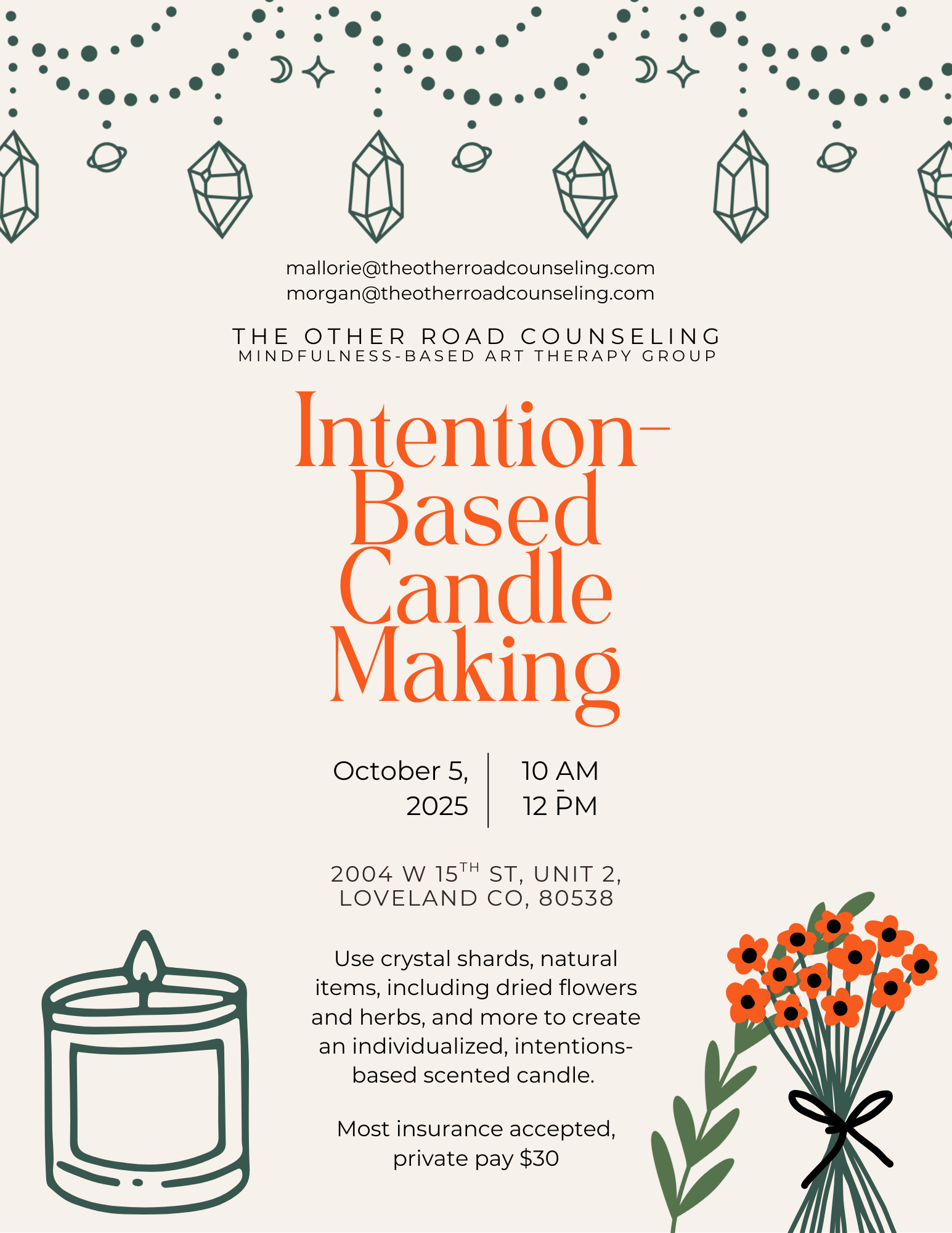Mindfulness-Based Art Therapy Group
Join us in exploring a variety of art mediums every 1st Sunday of the month at our Loveland office. Our art group is open to anyone age 16+, with exceptions available based on project and alternative circumstances. Contact us through email or our website to learn more information about this month’s art project.
Past Groups:
- Pottery and Hand-Sculpting
- Fluid Art
Upcoming Groups:
- Intention-Based Candle Making
- Jewelry Making
- Multimedia Collage
- Printmaking
- Abstract Painting
- … and more!
Teen Art Group
We will also be hosting teen art groups every other month on the second Sunday. Our teen art groups are open to individuals aged 13-18 and will focus on art projects centered on self-esteem, connection, self-expression, nervous system regulation, mindfulness, and more.
Upcoming Projects:
- Multimedia Collage
- Sensory Toy Creation
- Hand Sculpting
- … and more!
